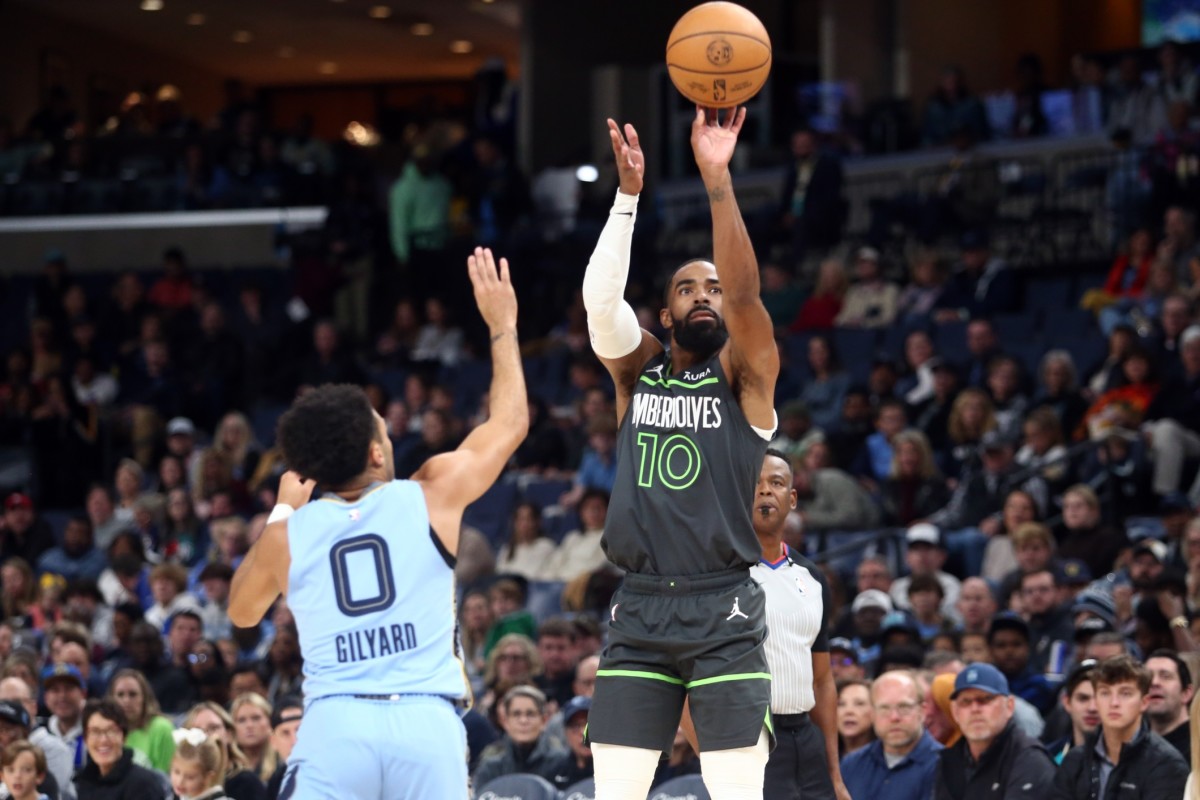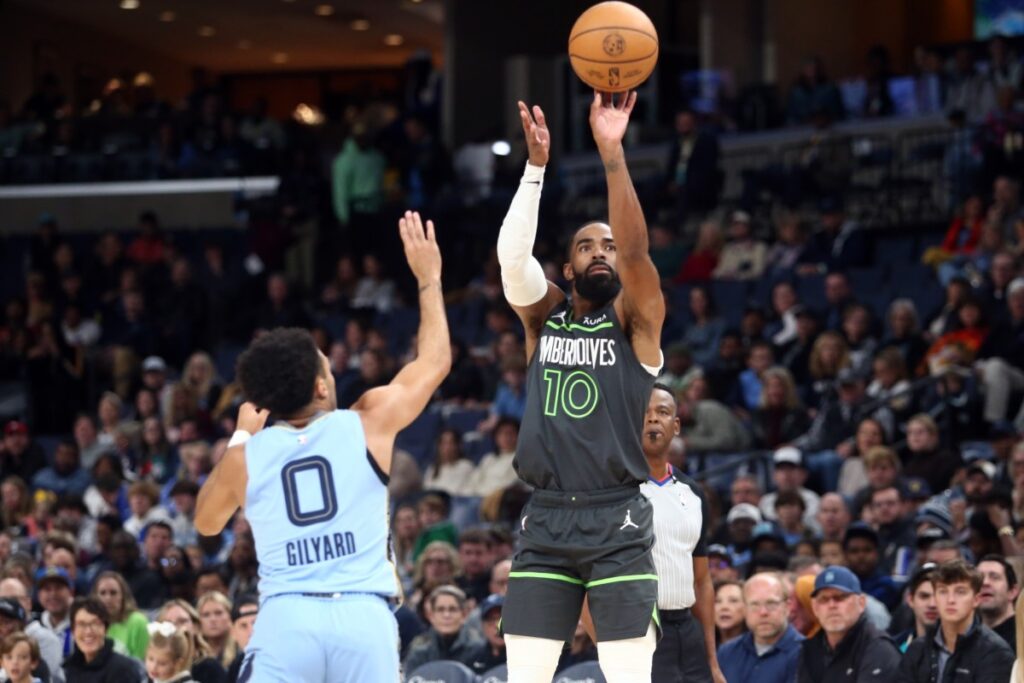
On April 10, 2025, the last buzzer resounded across the FedExForum, causing an unsettling quiet. Memphis fans were shocked and experts were rushing to find historical context as what started as a normal mid-season clash turned into a statistical abnormality. The Minnesota Timberwolves’ third-quarter offensive barrage was almost legendary in its execution; it didn’t simply defeat the Grizzlies; it methodically decimated them.
Some local writers were describing Anthony Edwards’s recent effort as “the most complete offensive performance seen in Memphis this decade.” His attitude was ferociously determined and his jersey was colored with perspiration. What started off as a competitive game became a one-sided statistical exhibition thanks to his 44-point masterwork, which put the limits and ceilings of both teams in sharp contrast.
Edwards told reporters afterwards, “I just found my rhythm after halftime,” downplaying the NBA superstar’s real performance. “The basket looked like the ocean, and I was just dropping pebbles in.”
The Anatomy of Dominance
| Game Information | Details |
|---|---|
| Date & Venue | April 10, 2025 at FedExForum, Memphis, Tennessee |
| Final Score | Minnesota Timberwolves 141, Memphis Grizzlies 125 |
| Leading Scorer | Anthony Edwards (Timberwolves) – 44 points |
| Quarter Breakdown | Timberwolves: 37-30-52-22 (141) Grizzlies: 31-41-25-28 (125) |
| Key Statistics | Field Goals: MIN 55.2% vs. MEM 51.7% 3PT: MIN 45.5% (20/44) vs. MEM 50.0% (18/36) FT: MIN 89.3% (25/28) vs. MEM 71.4% (15/21) Rebounds: MIN 41 vs. MEM 33 |
| Official Box Score | NBA.com Game Summary |
At first glance, the game’s competitive arc—Minnesota leading at halftime and then rallying to win in the second half—may seem unremarkable. The game’s defining statistical anomaly—a third quarter that utterly reshaped the narrative—lies hidden inside those data, however.
In that span of twelve minutes, the Timberwolves were able to score on almost every shot they attempted. During that time, they made 8 of 11 three-pointers, posing mathematical challenges that Memphis couldn’t overcome. In response to Minnesota’s relentlessly efficient ball movement, the Grizzlies’ defensive rotations became more and more frantic. The Timberwolves’ high-percentage looks kept piling up.
“I’ve never seen anything quite like it,” Memphis head coach Taylor Jenkins said, his voice carrying a hint of professional deference despite the loss. They weren’t only taking pictures; they were composing flawless photos. It’s not the same.
Looking Outside the Box
An intriguing tale is told by the perimeter combat in particular. The volume difference was the deciding factor, even though Memphis shot 50% from beyond the arc compared to Minnesota’s 45.5%. Eight more three-pointers were attempted by Minnesota, with two more made, adding six crucial points to the final margin.
This statistical fact illustrates how the two Western Conference candidates differ philosophically. While the current NBA has drilled three-pointers into Minnesota’s heads, Memphis has stuck to a more balanced offense that sometimes forgoes good three-point chances in favor of high-percentage inside looks.
Considering Memphis’s historical dominance in this area, the rebounding advantage of the Timberwolves provides a further interesting angle to the story. By combining positional discipline with pure athletic resolve, Minnesota was able to collect 41 rebounds compared to Memphis’s 33. They did an outstanding job of limiting the Grizzlies to just eight offensive rebounds all night long, even though Memphis missed 42 field goal attempts.
The disparity in free throws further widened Minnesota’s lead. The Wolves not only had more chances to score (28 vs. 21), but they also converted them with greater clinical accuracy (89.3% vs. 71.4%). These less exciting statistical categories that don’t often make headline packages may sometimes determine contemporary NBA games, as this 10-point lead from the charity stripe shows.
Placing the Performance in Perspective
With this statistical masterpiece, Minnesota proved they were more than simply a winning team—they were becoming serious competitors in the Western Conference. The explosive explosion spearheaded by Edwards confirmed their potential as a scoring monster that can overwhelm opponents with decent defenses by executing extraordinary bursts of play.
This is the perfect moment for us to discover who we are, Minnesota Vikings coach Chris Finch said afterwards. “What you saw tonight wasn’t just about making shots—it was about creating the right shots through our system and trusting each other completely.”
Memphis still had some good statistical signs despite the discouraging outcome. Their offensive foundation seems to be fundamentally good, as they shot 51.7% from the field against a defensively competent Minnesota club. On most nights, they would win with a three-point shooting percentage of 50%. As an attacking unit, the 125 points would be considered outstanding in almost any other setting.
However, the mathematical reality of basketball often goes beyond just statistical arithmetic. Results are sometimes dictated by factors other than numerical data, such as the timing of performance clusters, swings in psychological momentum, and opportunistic execution. The rapid change in basketball fortunes that can occur when confidence, system execution, and skill all come together was on full display during those crucial twelve minutes as Minnesota showcased their focused greatness.
While both brands are still in the early stages of their growth, this data snapshot will be useful for gauging their strengths and weaknesses. A route to playoff success has been laid out for Minnesota; it consists of aggressive perimeter volume, rebounding domination, and free-throw creation. Defensive communication and the ability to adapt to opponent shooting surges stand out as obvious areas of need for Memphis’s improvement.
Superb statistical achievements like these go beyond simple description in the data-driven NBA of today; they serve as prescriptions for future success. In an increasingly analytics-driven league, both clubs will look back on this game with regret as they try to glean useful information about each other and themselves for the next seasons.
